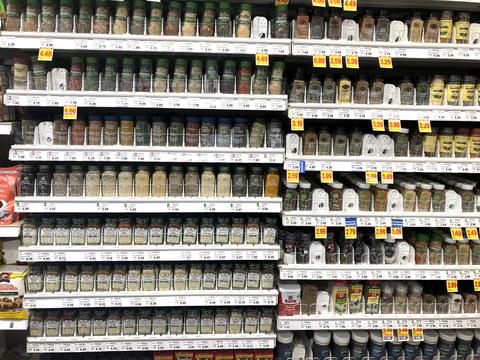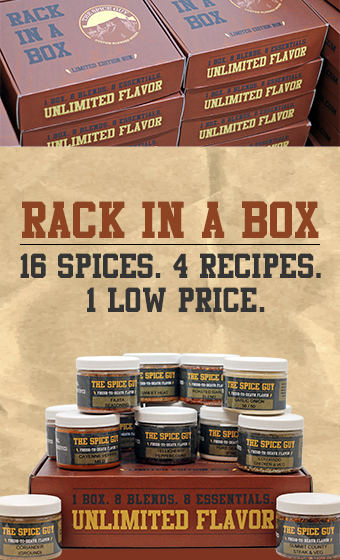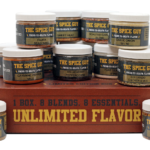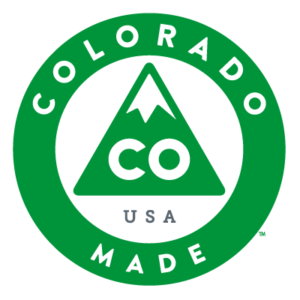Clearly, we’re biased on this one, but we started The Spice Guy because we realized that the way that grocery stores handle spices is a little f*cked up.
Hear us out on why you should skip over that aisle next time you’re shopping around.
“Spices vary consequentially in both quality and cost. The conundrum for us, the consumers, is that there are no formal guidelines set, nothing offered publicly, that allows us to decipher what’s what. We have no way to tangibly consider, much less assess, the strength, color, vitality, or overall quality versus the price.” – The Kitchn
Here are the four biggest reasons to stop picking up your spices at the grocery store.
Ingredients Can Be Questionable

Have you ever read the back of some spice blends? Oftentimes, many are filled with ingredients we can’t pronounce. Typically, when you’re sprinkling these babies on your food, you’re getting some anti-caking agents, preservatives or hidden sugars mixed in. Last time we checked, no one’s at the dinner table shouting, “Oh, tricalcium phosphate, disodium inosinate and disodium guanylate! My favorites!”
And, look at the taco seasoning (above left). Who doesn’t love the little send-off note at the bottom, below the laundry list of ingredients? “Partially produced with genetic engineering.” Oh, wow. Gotta love tacos made with the loving touch of a chemical engineer.
They’re Way More Expensive

Okay, Spice Guy blog reader, come on down! It’s time to play The Price is Right. We went to the grocery store to price compare their products with our own to show you what we really mean by “the grocery store is RIPPING YOU OFF.”
For example, take the oregano pictured above. The ticket price at the bottom says the price of that oregano is $8.28 per ounce. Our Mediterranean-cut oregano, on the other hand, is $6.50 for four ounces — coming to just $1.62 per ounce.
This becomes even more upsetting when you look at blends. Basically, our affordable blends are like the Showcase Showdown. We broke down what it would cost you to buy all of the ingredients from the grocery store to make two of our most popular blends at home. Here’s how it went:

So, that means if you want to make our Italian Blend at home, you can pay $29.44 instead of $4.25. You’d have to order a pound of the blend from us to hit $30. That’s what restaurants do.
And, finally, our Blackened Red Fish Magic Blend? That’ll run you $41.41 at the grocery instead of $8.25. You would have to order almost three pounds to meet the grocery store numbers.
They Aren’t Always Fresh
More often than not, spices at the grocery are out of date before you even buy them.
“Products on the shelves of your average grocery chain my have been there for a year or more, and they probably sat in a warehouse up to a year before that.” – Simple Bites
We tell our customers to use their spices within a year, and at the grocery, sometimes you’re buying them after that year is already up. Freshness matters, and we promise you’ll taste a difference. There’s a reason more than 400 restaurants order from us — we keep our quality standards high and our inventory tight.
We’ll let them tell you themselves. Check out some of our chefs explaining why they choose us here, here, here, here and here.
“The supply chain that brings spices to the store is quite long — beginning with grower and harvester and moving to initial processor, through local traders to large processors, and then to food wholesalers, retailers, and finally, to you… The turnaround time from picking to shelf is often 12 to 18 months or more. The fresher the spice, the more vital, flavorful, and fragrant… Different companies ask for different shelf-life standards, making it hard for us to know how old a spice really is.” – The Kitchn
Sourcing is Unclear

More than ever, people want to know where their food is coming from and who is selling it to them. We can answer both for you on every ingredient we sell.
“The most important thing to me is supporting local businesses with organic products. He just does the right thing. He’s the best source for restaurants when you need something that’s hard to find. Lots of suppliers only offer what they have, but Zach is happy to go out and look for things.” – Dana Rodriguez, Chef & Owner, Work & Class
Unfortunately, the spice industry is one that just isn’t as regulated as other food industries. Cheryl Deen, director of the American Spice Traders Association, explained it best to The Kitchn — “There are no regulatory rankings… Quality is an issue that is up to individual companies.”
If you want to support a small, local business while also receiving total sourcing transparency, this is the place for you. If you ever have any questions about any product we sell, we’ll shoot it to you straight. Just contact us.
“The Spice Guy is everything we look for when we’re sourcing — small, local, independent, and they have a great product.” – Justin Brunson, Chef & Owner, Old Major













